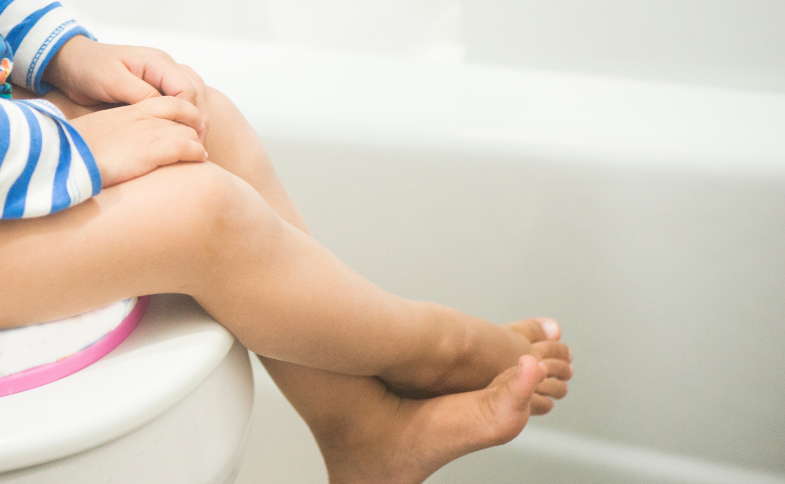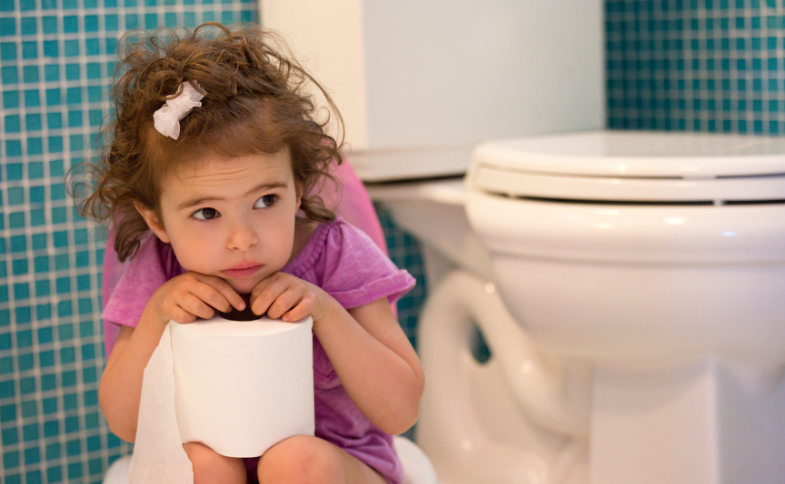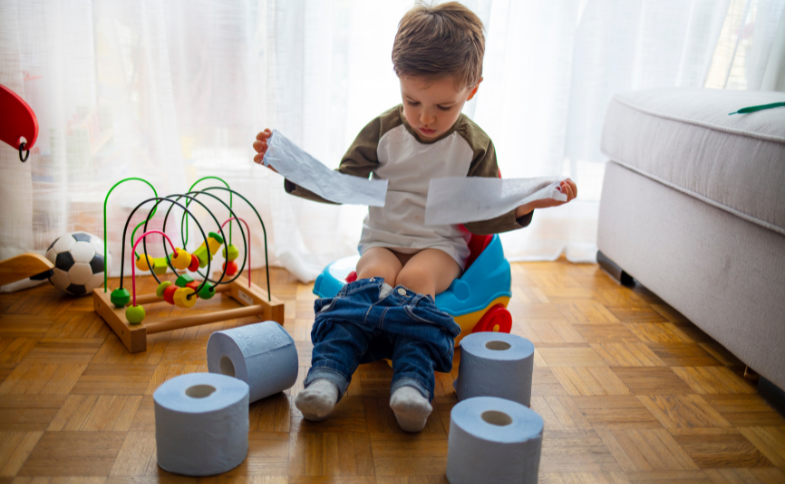How to Potty Train Your Toddler in 3 Days
Potty training is a major milestone for every toddler and their parents. It’s pretty exciting to know that your little one is finally ready to leave diapers behind and use the toilet like a big kid. However, it can also be a challenging, frustrating, and messy process.

The good news is that it is possible to make this process easier and faster for everyone involved. In fact, you can get it over and done within just three days! Wondering exactly how to make this happen? Well, this guide is going to show you how.
Potty training your toddler in 3 days is based on a few simple principles: consistency, encouragement, and patience. Basically, it involves keeping your child naked or loosely clothed at home for three days and taking them to the toilet every 15 minutes or whenever they show signs of needing to go. While doing so, you also have to praise your toddler every time they use the toilet successfully. Also, avoid any negative reaction or punishment when your kiddo has an accident.
Day 1: The Big Day
This marks the beginning of the 3-day potty training experience. Here is how to go about it:
Preparation:
Make sure you have everything ready on the first day to increase your chances for success. Here are some of the things you will need:
- A potty chair or toilet seat that fits your child. Place it in the bathroom or in another convenient spot where your child can access it easily.
- A lot of fluids for your child to drink throughout the day. You want your little one to pee as often as possible.
- Some snacks, stickers, treats, or toys for rewarding your child when they use the potty successfully. Anything that motivates your child will work.
- Some cleaning supplies for wiping up any accidents that may happen. Think paper towels, wipes, disinfectant spray, and so on.
- Some loose-fitting pants or shorts for your child to wear. No underwear or diapers allowed.
Execution:
Throughout the day, pay close attention to your child’s needs. Here are some things you should do:
- Explain to your child what potty training is and why it is important. Tell them that they are a big kid now and they can use the toilet like big kids do
- Keep your child naked or loosely clothed at home so they can feel when they need to go and avoid any barriers that may slow them down
- Take your child to the potty every 15 minutes or whenever they show signs of needing to go. Help them sit on the potty and wait for a few minutes. If nothing happens, praise them for trying and take them back later.
- Celebrate every time your child uses the potty successfully. Tell them how proud you are of them and how well they are doing.
- Do not scold or punish your child if they have an accident. Accidents are normal and expected on the first day. Just clean up calmly and remind them to use the potty next time.
Evaluation:
At the end of the first day, ask yourself these questions:
- How often does your child use the potty successfully compared to having accidents? Has your little one improved as the day goes on?
- How does your child react to using the potty? Are they excited, nervous, or indifferent? Do they resist or cooperate with you?
- How do you feel about the process? Are you confident, stressed, or frustrated? Do you need more support or guidance?
Based on your answers, adjust your tactics and make improvements for the next day.

Day 2: Building Confidence
The second day is all about helping your child become more confident and consistent. Here is how to do it:
Preparation:
You will need the same materials and equipment that you had on the first day. Consider also getting some extra underwear and pants in case of accidents. Also have ready the same rewards that you used to motivate your child before.
Try to keep the environment and schedule as it was on the first day. On the second day, you can also introduce some more activities that are compatible with potty training. For example, you can play games that involve running to the potty, read books about potty training, or go for a short walk with a portable potty.
Execution:
- Start the day by reminding your child about your potty training experience the day before. Don’t forget to praise them for their success on the first day and encourage them to do even better today.
- For the most part, Day 2 is all about following the same routine as you had on Day 1. However, on Day 2, you can start giving your child more responsibility and autonomy. For example, you can let them choose their own underwear, help them wipe themselves after using the potty, or let them flush the toilet by themselves.
- Expect some accidents to still happen today. However, don’t get discouraged or angry if your child has an accident or refuses to use the potty. Try to avoid negative consequences such as scolding or taking away rewards.
Evaluation:
At the end of Day 2, here is what you have to do:
- Review how the day went with your child. Ask them what they liked and disliked about potty training today. Praise them for their achievements and point out areas where they can improve.
- Assess how well you followed the plan today. Did you stick to the schedule? Did you provide enough support and encouragement? Did you handle accidents calmly? What can you do better tomorrow?

Day 3: Success!
The final day is all about helping your child master the skill of going potty independently:
Preparation:
You will need the same materials and equipment as before. You will also need some confidence and patience. Day 3 is the final day of the potty training process, but it doesn’t mean that your child will be perfect from now on. Understand that there may still be some accidents and challenges along the way.
On day 3, while maintaining the same environment and schedule is important, you can start introducing some more variations to test your child’s potty skills. For example, you can extend the time between potty breaks, try different types of toilets or potties, or go for a longer outing with a backup plan.
Execution:
- Start the day by congratulating your child for making it to the third day. Remind them of how far they have come and how proud you are of them. Tell them that today is a special day because they will graduate from potty training!
- Follow the same routine as the previous days. However, on Day 3, you can also start giving your child more challenges and feedback. For example, you can ask them to tell you when they need to go instead of taking them every 15 minutes.
- You can also start reducing or phasing out rewards on Day 3. Instead of giving prizes every time they use the potty successfully, you can give them verbal praise or hugs.
Be prepared for some resistance or regression from your child. They may feel anxious about leaving behind diapers or losing your attention. They may also feel overwhelmed by the new expectations or challenges. Don’t get frustrated or give up if your child has an accident or refuses to use the potty. Instead, reassure them. Remind them of how much fun and freedom they will have once they master potty training.
Evaluation:
At the end of the third day, it’s time to celebrate with your child! Tell them how proud you are of them. Your little one has earned a special reward! Review the entire process with your child. At this point you can start thinking about some future goals such as staying dry at night or using public restrooms confidently.
Moving forward, you will need to be flexible and patient if your child faces some setbacks. Provide ongoing support and reinforcement until your kiddo is fully confident and independent in using the toilet.
Final Thoughts
If you choose to use this method to potty train your little one, the benefits are obvious: you get to save money on diapers, it has a lower environmental impact, and it is a great way to boost your kiddo’s independence and confidence. It also doesn’t hurt that it allows you to get everything over with in one weekend instead of dragging the potty training process out for months.
However, there are a few caveats to it. It is a time-consuming process, and you need to pay lots of attention to your little one throughout. This means you need to be very dedicated in order to achieve success. It may also not work if your child is not physically or emotionally ready to be potty trained.
That said, if you think your little one is ready for potty training, we highly recommend giving this a shot! With the process outlined above, it should be a walk in the park. Who knows, you might even end up being pleasantly surprised at just how fast your toddler gets it! Good luck!